If you’ve been plagued by Red Ants in your garden, fear not. This guide not only explains the nature and types of Red Ants but also provides effective ways to eliminate them.
Learn how to distinguish between different species, understand the harm they cause, and apply methods such as boiling water, Diatomaceous Earth, water and soap, or strategic ant baiting to get rid of these pests. Let’s reclaim your garden from these troublesome invaders.
Red Ant colonies can be a huge nuisance. They usually don’t harm plants, but they can make it difficult to work in the garden since they can be very aggressive toward people and animals. It’s enough to bump into their nests by mistake to get swarmed and stung by the whole colony.
Not all Red Ants are the same though, and some aren’t much more dangerous than Black Ant species.
Choosing the best method to get rid of them would come from knowing how to identify them, so it is very useful to learn it.
- Related article: Ants in House Plant
In this article, we will talk about the different types of Red Ants, the damage they cause, and how to deal with them!
What Are Red Ants?
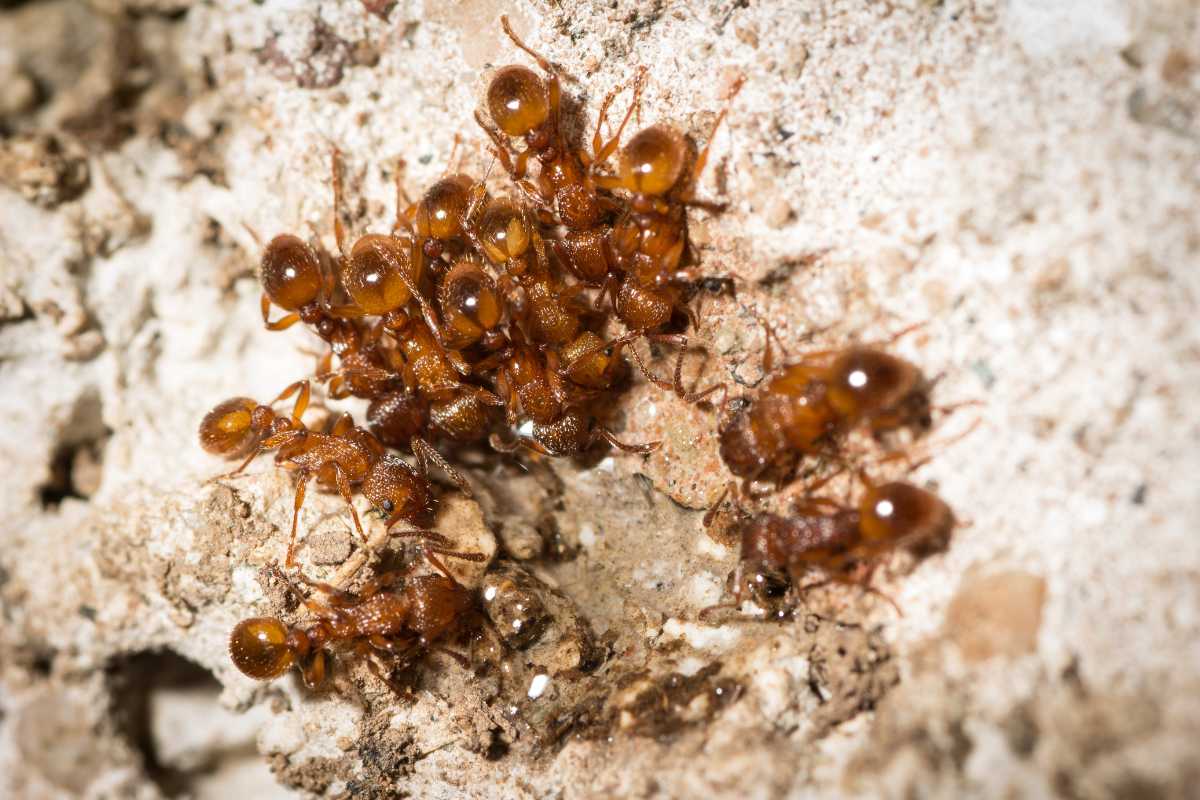
There became so many Red Ant species because it is a term that is commonly used to refer to different species.
Red Imported Fire Ants, or RIFA, an invasive species that belongs to the Solenopsis genus, is the species being referred to most of the time when people talk about Red Ants.
The common Red Ant (Myrmica rubra) is the most widespread species in Europez while Fire Ants are the most common Red Ants in the United States and also the most aggressive.
Common Red Ants have recently colonized North America, but they aren’t very numerous yet.
Carpenter, Tawny Crazy, Acrobat, Velvet, and Red Harvester are some of the most common ant species that are found in the U.S.
Even though they are sometimes confused with each other due to their similar characteristics, these ant species are very different in their behaviors and the damage they can cause.
Types of Red Ants
Many differences can help distinguish Red Ants, both in external appearance and behavior, even if they all look the same to you.
For example, not all of them are, but Red Ants are known to be aggressive.
The following are the main types of Red Ants that can be found in North America:
1. Fire Ants
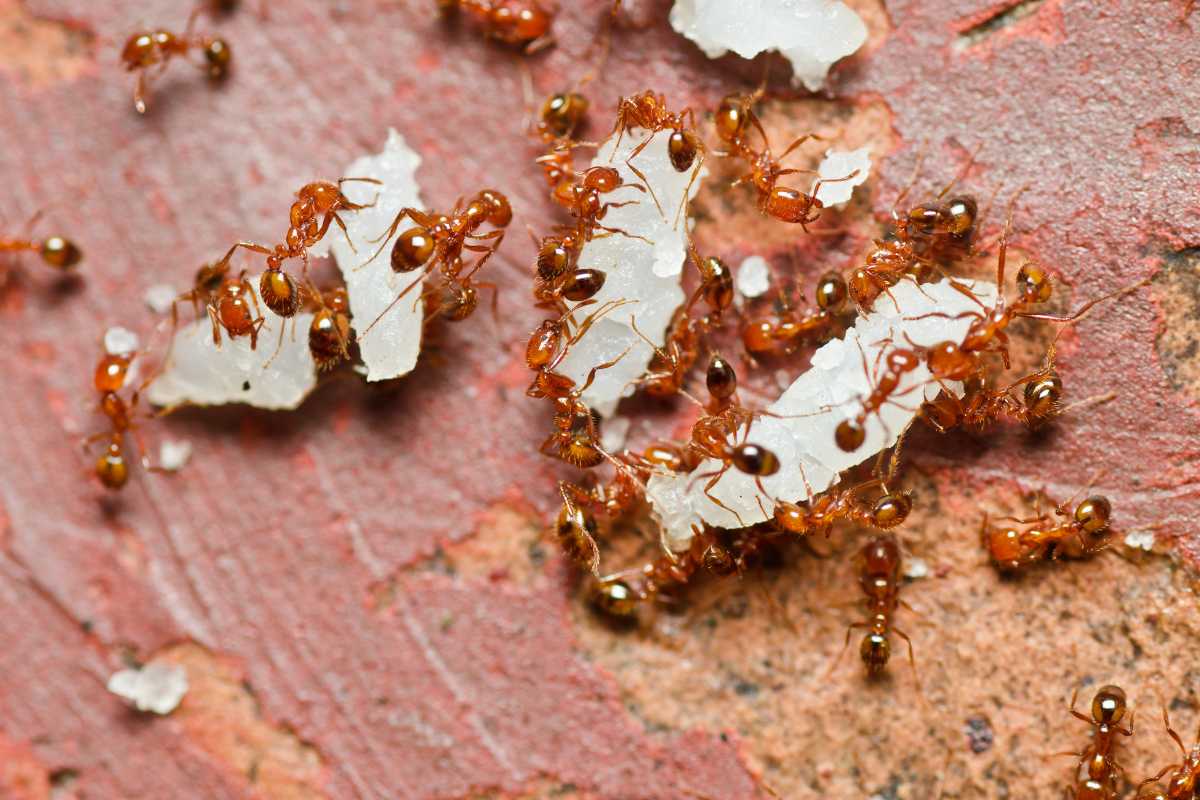
Red Imported Fire Ants (Solenopsis invicta) are native to South America and were introduced in the US in the 1930s.
Nowadays, they are the most common red ant in North America, as well as the most aggressive towards people and animals. For now, they have infested the southern states as they can’t survive in cold temperatures.
Southern Red Fire Ants (Solenopsis xyloni), which are common in arid areas of Texas, New Mexico, Arizona, and California, and Tropical Fire Ants (Solenopsis geminata) which are native to Africa, are two very similar species of Fire Ants.
They are closely related and have very similar behaviors, however, they need to be dealt with in different ways. These are much less common but there are also Black Ants.
Fire Ants are much smaller and more aggressibe in general, making them distinguishable from other Red Ants.
They build their nests directly on the ground and are mostly active during the milder hours of the day.
2. Red and Black Carpenter Ants
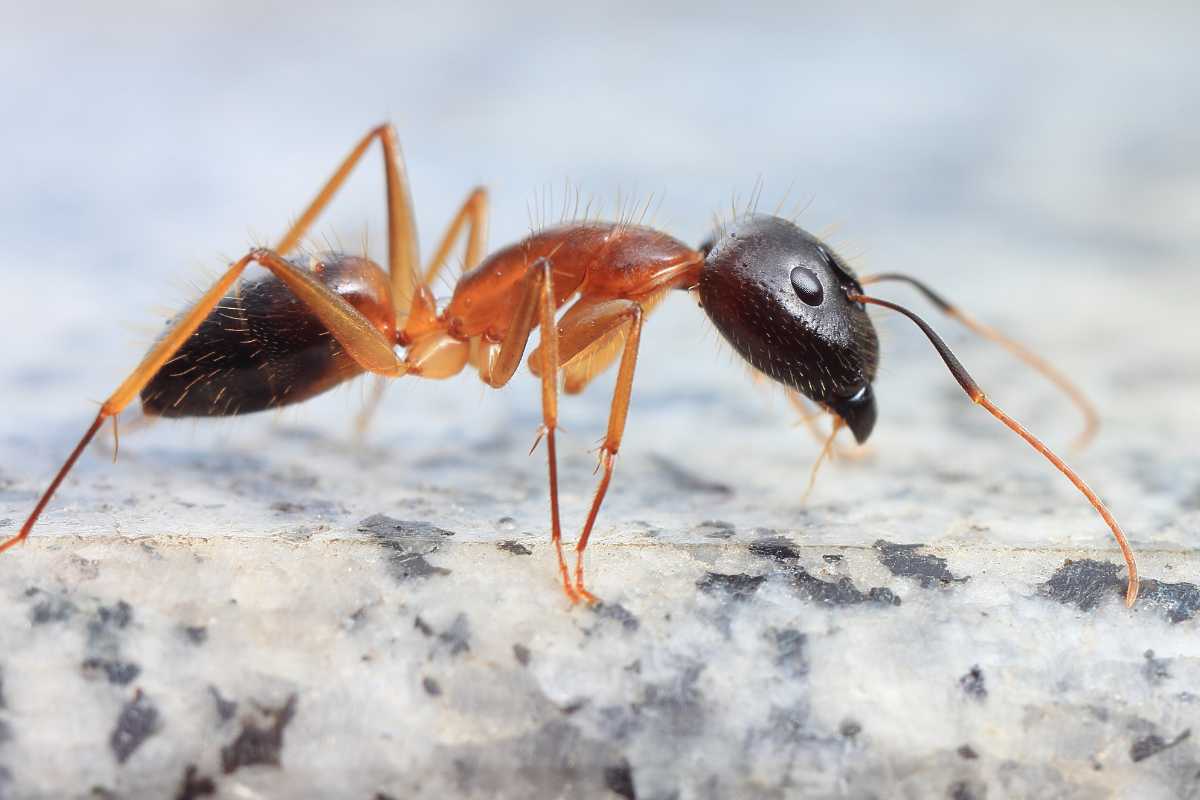
Some species of Carpenter Ants are a similar color to that of Fire Ants so it might be easy to confuse them.
Carpenter Ants can be identified because they have a black abdomen and they are bigger than fire ants. They also have many differences in behavior.
These ants are much less aggressive than Fire Ants and they don’t attack as quickly. They can bite, but it doesn’t hurt as much as a Fire Ant sting.
Red and Black Carpenter Ants are usually more active during the day, in contrast with Fire Ants. They have been given their common name because they carve wood to make their nests, not because they eat it.
The Florida Carpenter Ants (Camponotus floridanus and Camponotus tortuganus) and Camponotus sayi, which doesn’t have a common name yet, are the most common species of Carpenter Ants in the U.S.
3. Tawny Crazy Ants
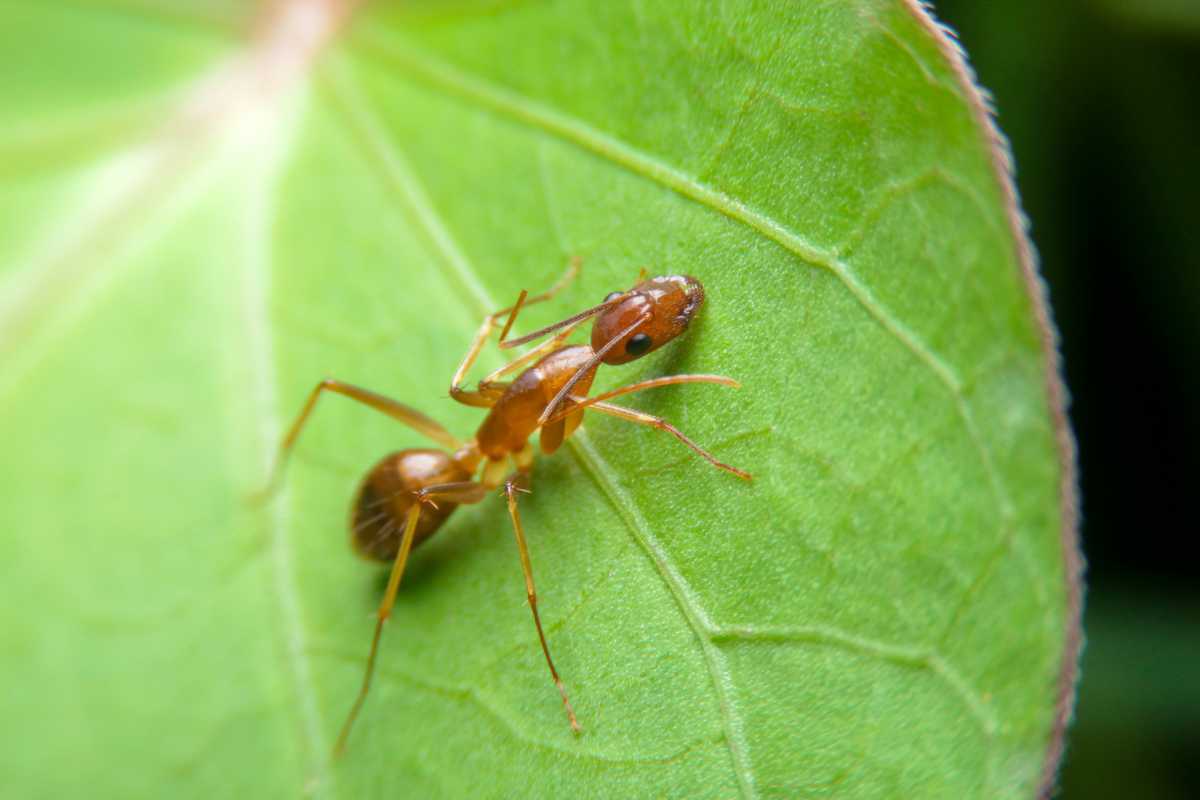
The Tawny Crazy Ant, or Raspberry Crazy Ant, is brownish-red like Fire Ants and is also of a similar size. To distinguish it from Fire Ants, it’s important to observe its behavior, which is where it differs the most from Fire Ants.
Tawny Crazy Ants don’t build mounds, but they nest instead under rocks or debris. These ants can bite, but they don’t often attack humans. Also, the pain they cause is mild and fades quickly.
The easiest way to distinguish them is probably by noting the way they move. While Fire Ants make trails and walk along them in straight lines, Tawny Crazy ants are erratic, moving randomly and quickly.
These ants can be bothersome because they form huge colonies with millions of workers.
4. Acrobat Ants
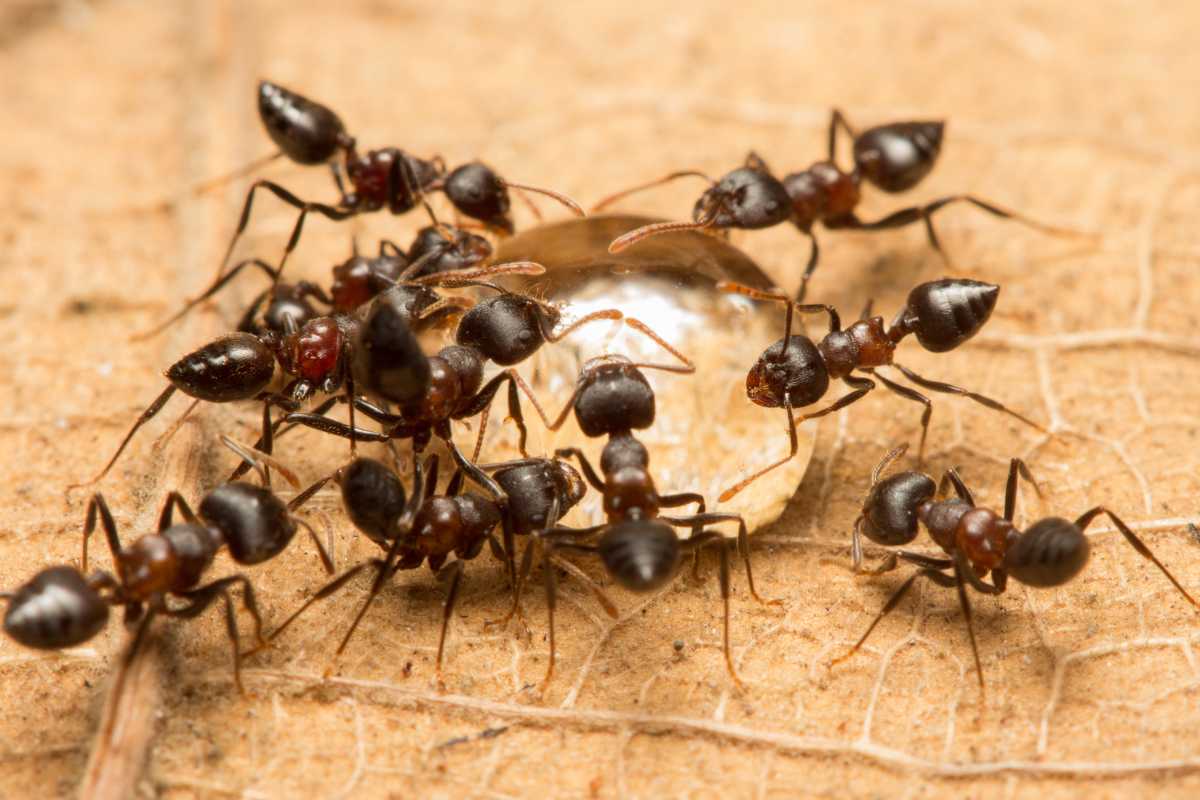
Acrobat Ants (Crematogaster spp.) can be yellowish or dark brown, but some of them resemble Fire Ants in color.
Acrobat Ants can sting, but they rarely do. They usually build their nests inside dead wood or even trees but sometimes they take over abandoned nests.
Despite their similarities with Fire Ants, it’s easy to identify them as when they are disturbed, they raise their abdomens so that it looks like they are standing on their heads.
5. Velvet Ants
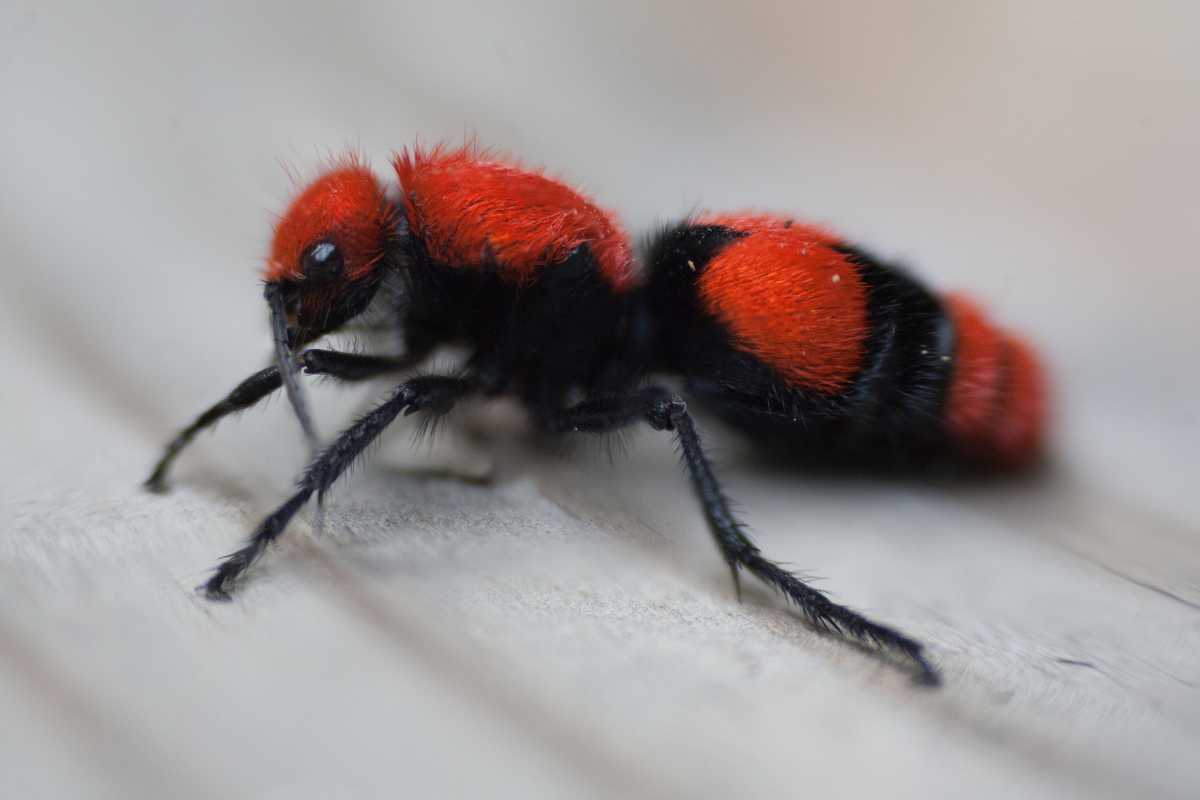
Velvet Ants aren’t ants, but wasps from the Mutillidae family. They are commonly called ants because the females resemble them. They are wingless and fuzzy, hence the other part of their name.
Velvet Ants are solitary and aren’t at all aggressive. If threatened, their response is to run away. Even if they can technically sting, it is very rare to be stung by these wasps.
6. Red Harvester Ants
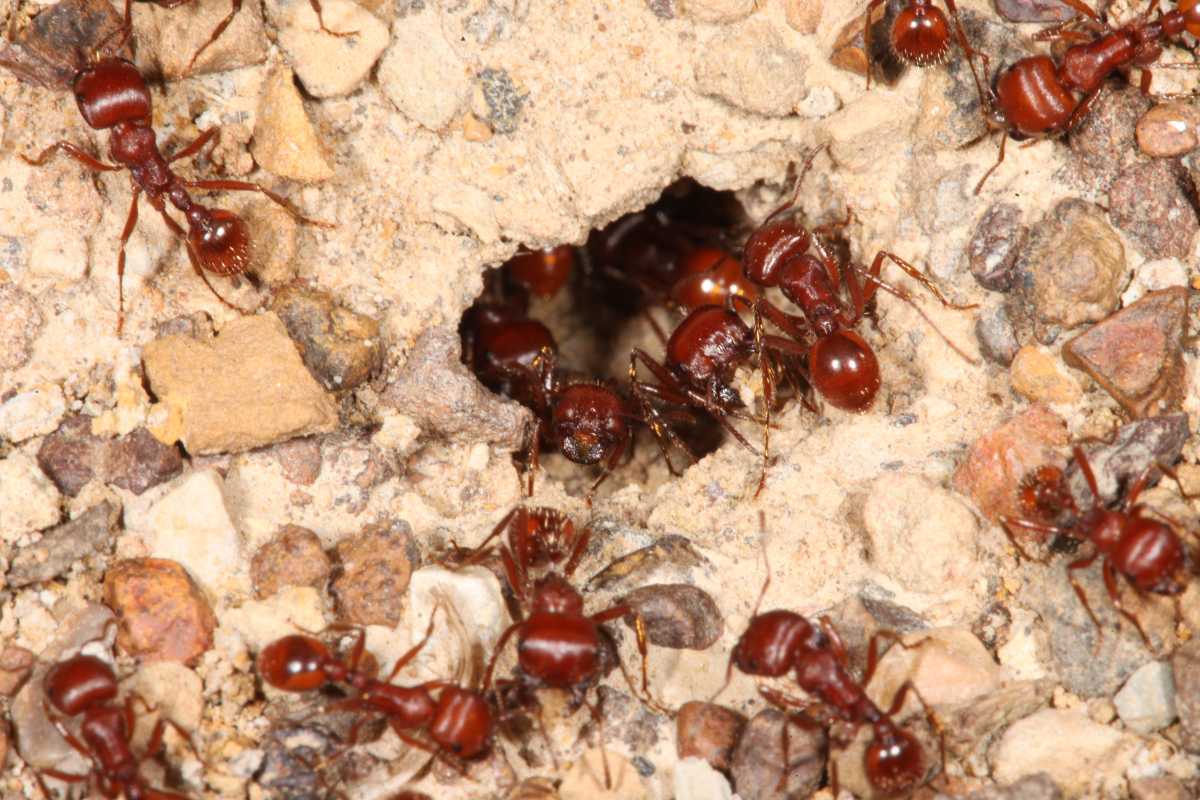
Pogonomyrmex barbatus is a species of Harvester Ants that gets often mistaken for Fire Ants.
Despite the similarities, they aren’t related to Fire Ants and they can be helpful in the garden.
As their primary source of food is seeds, Red Harvester Ants have developed a sort of mutualistic relationship with some plants, which benefit from the seed dispersal activity of these ants.
The Red Harvester Ant is native to the Southwestern United States where it resides in arid areas.
Red Ants vs Black Ants
Just like there isn’t a single type of Red Ant, there are many different species of ants that are black in color.
The main difference between Red and Black ants is that the latter are rarely aggressive.
Black Ant colonies are also more commonly found inside the house, where they are certainly a nuisance even if they usually don’t cause major damage.
Most Black Ants are more useful than problematic since they carry out a variety of important functions: they feed from garden pests, pollinate plants, and decompose organic matter.
The exception might be Carpenter Ants, which could damage your home and furniture by carving out tunnels in wood structures.
Overall, there are about 24 species of Black Ants, and the most common types are Garden Ants and Sugar Ants. There are also Black Carpenter Ants and Odorous House Ants.
Some of these ants might sting or bite, but only as a defense mechanism, and they never swarm their victim as Fire Ants do. Their bite also doesn’t hurt as much as that of a Fire Ant.
What Attracts Red Ants to Your Garden?
Thinking about the basic needs of Red Ants, which are water, food, and shelter, is the key to understanding why they might be attracted to your garden.
They will be less likely to colonize your garden of they can’t find the resources they need in there.
1. Moist Environment
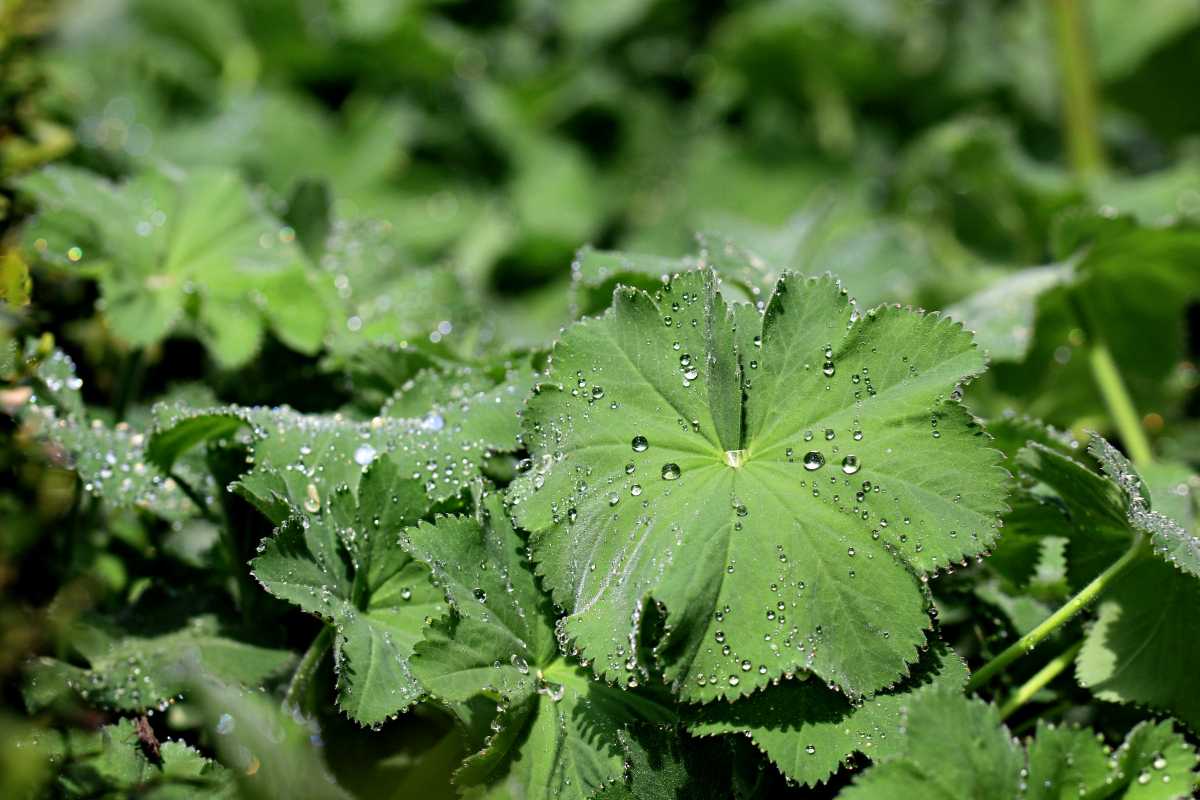
Ants need water to survive. If you have a source of water in your garden, such as areas where it might accumulate after rainfall, ants are more likely to choose it to build their nest.
Disposing of any container that might collect rain is certainly useful, as well as avoiding watering excessively.
2. Aphids
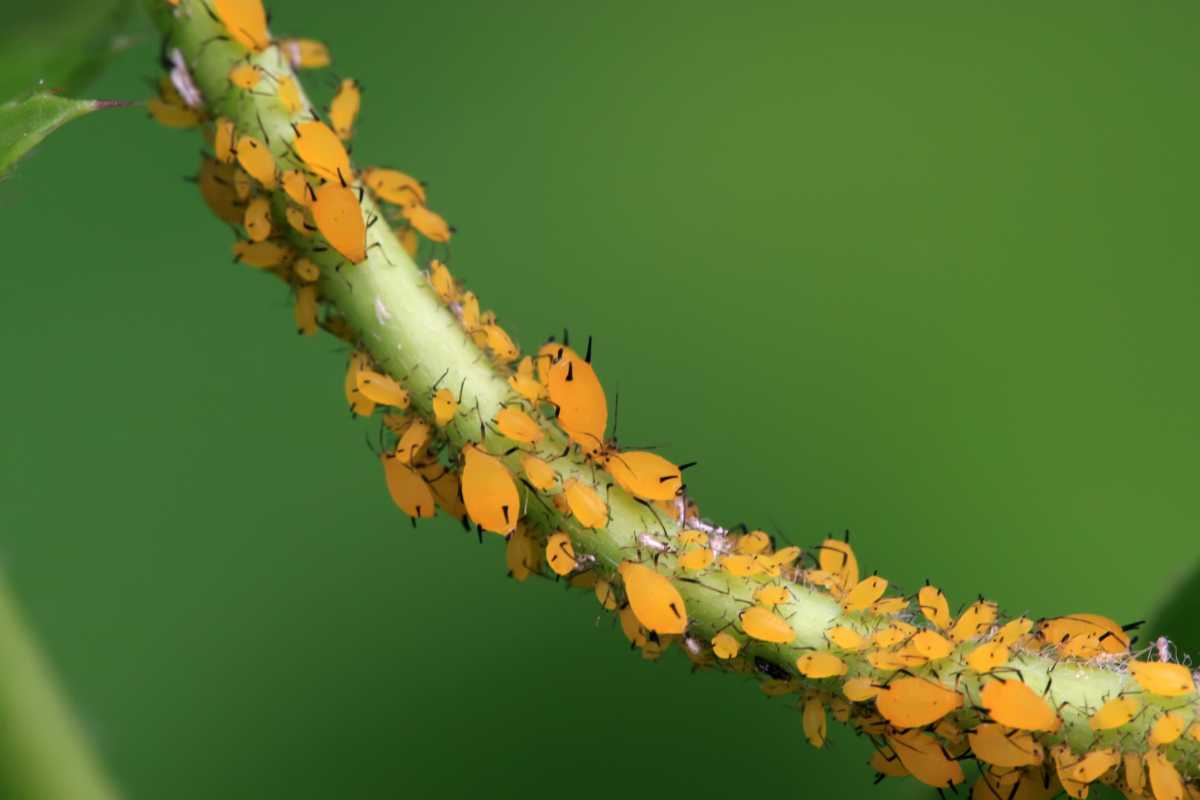
While it’s more common for Black Ants to be attracted to aphids, some species of Red Ants also use them as food source.
Aphids are tiny sap-sucking insects that excrete a sweet substance called honeydew. This is rich in nutrients and easy for ants to obtain, making it their favorite food.
This is one of the best ways to deal with ant infestation—taking care of aphids as many species of ants will leave by themselves once they are gone.
This is not the case for RIFAs, unfortunately.
3. Mulch
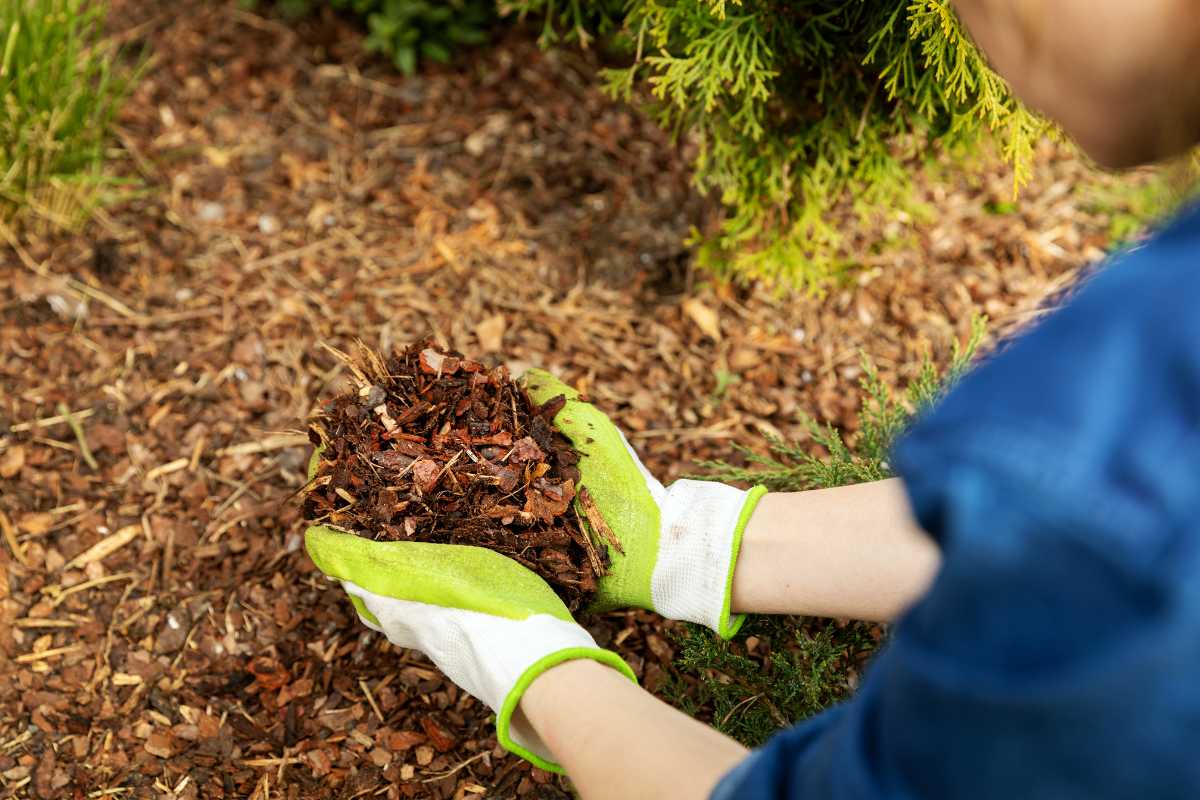
Mulching with organic material is great for the soil, but it also attracts ants.
Mulch retains moisture and provides the perfect habitat for most Red Ants to build their mounds. If you’re afraid of having an ant problem, consider inorganic mulching.
4. Large Open Areas

Red Ants, and Fire Ants especially, thrive in open areas that get plenty of sunshine.
Breaking up your garden area by adding trees or artificial structures that provide shade can work as a deterrent for ants.
What Damage Do Red Ants Cause?
The only really dangerous kind of Red Ants is Fire Ants, as most of the others are more an annoyance than a real issue.
Fire Ants Sting
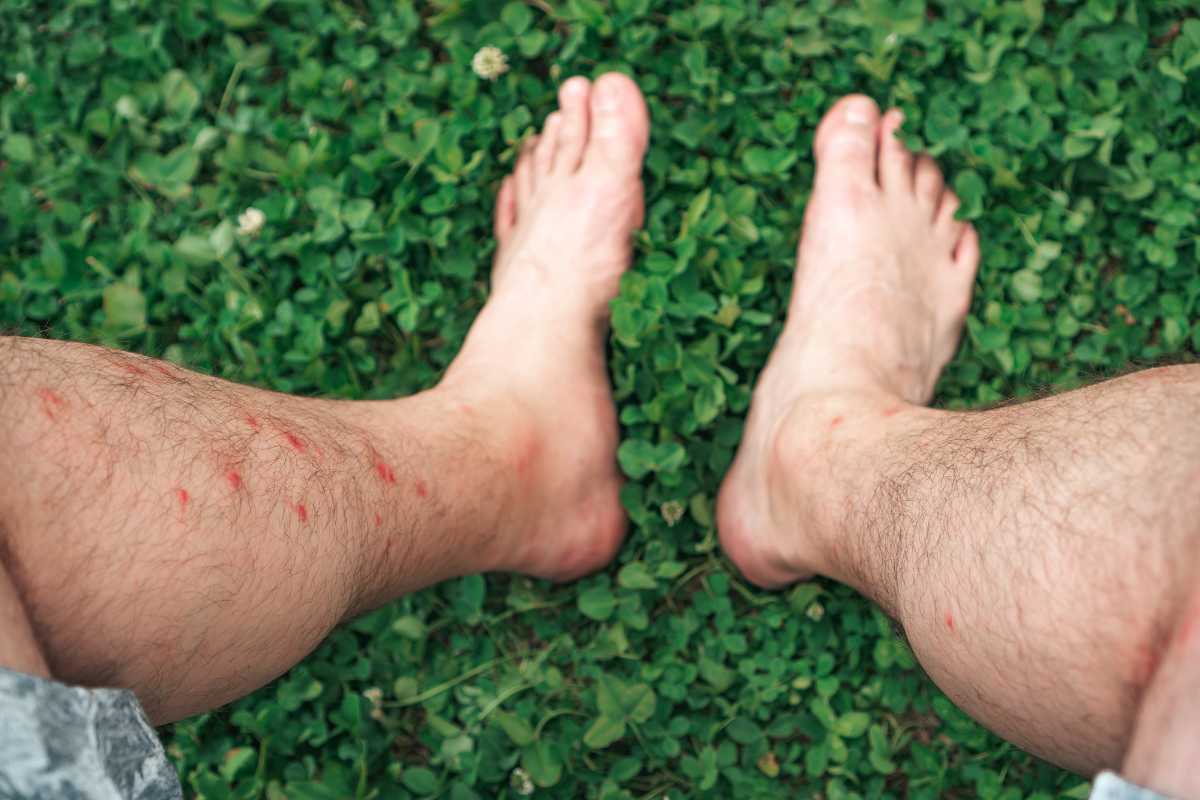
Fire Ants owe their name to the burning sensation they cause with their painful sting. The whole colony of these stinging pests will attack together and sting multiple times if they feel threatened.
While their bite isn’t usually very dangerous, it can cause a severe reaction in children, the elderly, or people with weak immune systems.
For the few people who are hypersensitive to ant venom, this ant sting can be lethal if it causes allergic reactions, or worst, anaphylactic shock.
Carpenter Ants Damage Wood
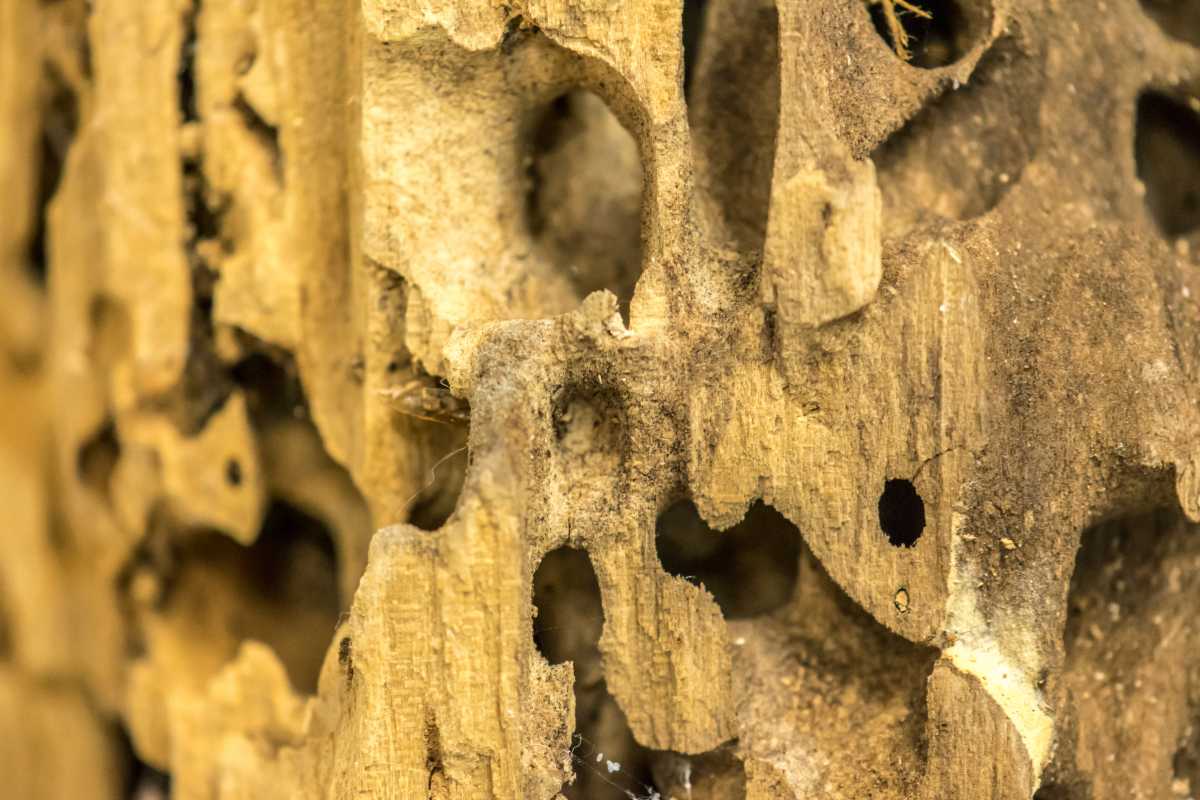
Carpenter Ants sometimes get mistaken for termites, as they live inside galleries they carve in wood.
In the garden, this isn’t much of an issue, except if Carpenter Ants decide to attack wooden supports.
In the house, on the other hand, a Carpenter Ant infestation can cause important damage to wooden structures and furniture.
Tawny Crazy Ants Bite
Unlike Fire Ants, Tawny Crazy Ants don’t have stingers, but they can bite. While their bite isn’t very painful, an attack from Tawny Crazy Ants can be alarming as they move chaotically.
These ants are also very difficult to get rid of once they get established, and they are known for colonizing unusual places.
The most damaging is when they decide to nest inside computers or car engines.
How to Get Rid of Red Ants in the Garden?
Red Ants that have set up a colony in your garden are easy to get rid of as there are many natural products and ways to do so.
Even though some of them work on all kinds of ants, there are still different approaches to use depending on the species.
Insecticides have been developed to target specific ants. While these are very effective, they cause all kinds of issues for the ecosystem, and they are best avoided whenever possible.
1. Boiling Water

The easiest and cheapest way to kill ants that build mounds is to flood them with boiling hot water. You can also pour it inside the ant colony entrances, or any cracks or holes you might have noticed that ants are using.
Avoid using this method if the ant nest is too close to your vegetables as they will also die from the boiling water.
Keep in mind that ant nests are very sturdy and you might need to use this method more than once for the whole colony to be wiped out.
2. Diatomaceous Earth (DE)
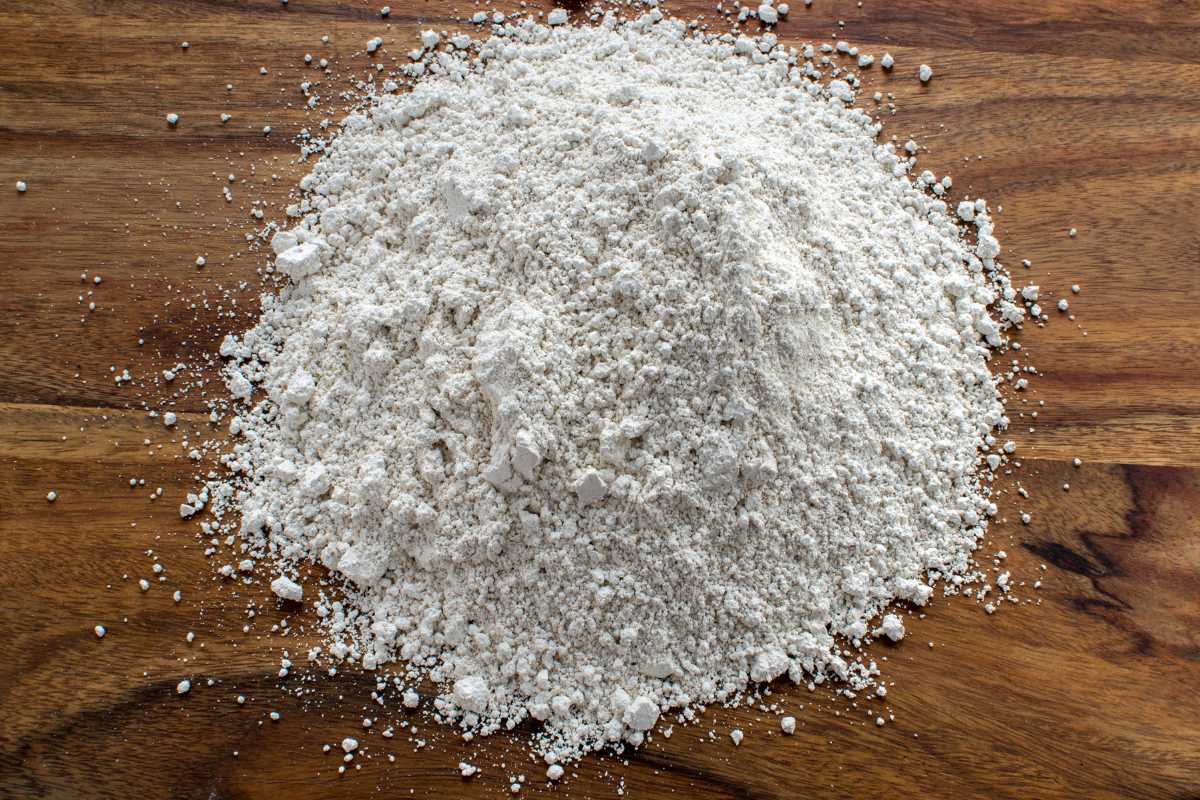
Food-grade Diatomaceous Earth (DE) is a natural method with almost no side effects that effectively kills many species of Red Ants.
The only downside of DE is that it might also affect beneficial insects, as it acts by piercing the exoskeletons and causing the insects to die of dehydration.
DE is a fine white powder that should be spread when the soil is dry as it would otherwise lose its effectiveness.
It can be applied directly on the mound and on the ants’ pathways. It is also possible to use it near your edible plants as it is safe to eat.
3. Water And Soap
Blasting ants with water from garden hose or spray bottles is another way of ant control as it keeps them away from the plants.
Soap is lethal for ants as it removes the outer coating of waxy material that protects their exoskeletons. Without this, the ants cannot survive.
To make an effective soapy water solution, combine liquid dish soap with Castile soap and some oil and pour it into the ant nest.
While this solution is quick and effective, it has the disadvantage of being harmful to the environment. Most soaps aren’t biodegradable and can damage both flora and fauna.
4. Ant Bait
An effective method to get rid of an entire colony of Red Ants is to use their weakness for sugar against them.
By mixing a poisonous substance with something sweet, like artificial sweeteners, or various oils like soybean oil, canola oil, and olive oil, as it is attractive to ants, you will attract plenty of ants that will carry the contaminated food back to their nests.
Many substances can be used. One of the most common and slightly toxic would be borax or boric acid.
There are also chemical baits and ant bait products that have been developed to target specific kinds of ants. It can be useful for Fire Ants, for example.
But even if they don’t work on most other insects, these products, like boric acid, still contain polluting substances that are best avoided whenever possible.
Final Thoughts on Red Ants in the Garden
Tiny Red Ants can be a nuisance in the garden, but they are beneficial species that play an important role in the ecosystem, especially as a part of integrated pest management.
While they can damage plants and sometimes sting humans, there are non-toxic methods of control like physically removing their nests and using natural deterrents like cinnamon and vinegar.
With proper management and effective treatment, it is possible to keep these tiny Red Ants in check without harming the environment.
Remember, the key to a thriving garden is a healthy and balanced ecosystem!
Take a look at these articles to learn more about Red Ants in your garden:
- Ants in Raised Beds
- How to Get Rid of Ants in Plant Pots
- Fire Ants in Garden Bed
- Ants in My Vegetable Garden
- Ants on Pepper Plants
Sources:


